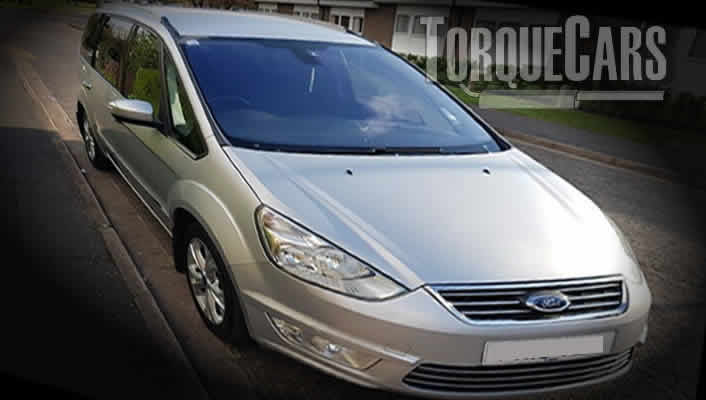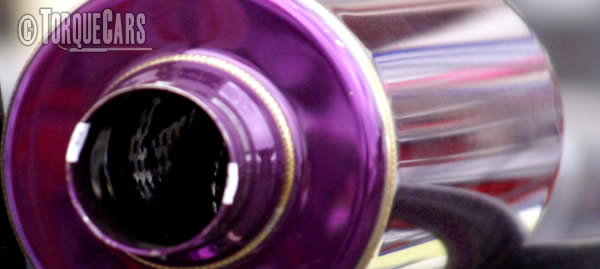Tuning the Ford Galaxy
"Tuning guide to the greatest Ford Galaxy modifications."
Ford Galaxy was actually a collaberative effort between the VAG group and Ford, and works really well. It had lots of internal space, ideally suited as multi person vehicle.
The 2.8 VR6 engine was a dream and made this something special in it’s class. It sold well but was heavily criticised, later versions improved the package and answered many of the criticisms levelled at the original.
The Galaxy is a great tuning project to have. The key to Galaxy tuning is getting your choice of modification right - a lot of money can be wasted if you do it wrong.

Handling/Suspension upgrades
Handling modifications are the thing most do first for the Galaxy.
Good suspension tweaks that usually enhance handling for the Galaxy include a couple of degrees negative camber and 1-1.5 degrees of toe (set out to improve cornering or in for better stability) on the front wheels.
We would go to a maximum drop of 30mm - 36 mm. on most models. You risk compromising your handling if you go lower than this.
Adding meatier brake discs and better performance pads will make for greatly improved braking.
We should point out that race pads will be noisy and will need a lot of heat before they bit.
On a road car the brakes are only used rarely and won't stop you as well so choose pads which have a low working temperature.
Top end power should be your overall aim on the Galaxy with a nice fat peak torque band.
Sadly with smaller engine sizes you are wasting your time spending money on modifications, so if this applies to you get yourself an engine swap then apply the following mods.
Power mods.
These mods uprated upgrades are usually fitted by our members, decide how far you want to go before you get started.
First generation
(Mk I & Mk II 1995−2006) V191
- 2.0i DOHC
- 2.3i DOHC
- 2.8i VR6
Diesel engine
- 1.9 TDI 90 bhp (67 kW) or 110 bhp (82 kW)
Second generation (2006−2015) CD340
Petrol: 2.0 L
- Duratec i4 2.0 L
- EcoBoost turbo I4 2.3 L
- Duratec i4 Flexifuel: 2.0 L
- Duratec i4 Diesel: 1.8 L
- Duratorq TDCi I4 2.0 L
- Duratorq TDCi I4 2.2 L
- Duratorq TDCi I4
Third generation (2015−present)CD390
Petrol:
- 1.5 L EcoBoost turbo I4
- 2.0 L EcoBoost turbo I4
Diesel:
- 2.0 L Duratorq TDCi I4
- 2.0 L EcoBlue TDCi I4
- 2.0 L EcoBlue twin-turbo I4
Getting the best tuning upgrade kits for your planned usage of the car is essential. Stage 3 (competition) mods just won't work well on the road hard to control in slow traffic.

Please watch our introduction Video tutorial to car tuning. Be sure to subscribe and support our new channel.
How to tune your car
- Improve the handling
Focus on Suspension improvements, such as coilovers and make sure the bushings are in good order and that the alignment is correct. Then focus on improving the brakes, with a big disk brake conversion kit and fast road brake pads.
- Remove restrictions
Focus on the intake and exhaust with filters being the common point of restriction in a tuned car. Intercoolers may also become restrictive on turbo engines so this may also need to be uprated.
- Burn more fuel & air
Increase the fuelling so it matches the air coming into the engine. The ratio is important so you need to improve the fuel pump and injectors, so the head mods, big valve conversions, fast road camshafts and forced induction upgrades extra supply of air is adequately met.
- Test and replace any weak parts
Weak areas are commonly the clutch, the turbocharger and pistons and crankshaft in a highly tuned engine. Makes sure these components will cope with your power aspirations.
- The Tune or Remap
A cars ECU controls the fuel, timing, spark and even the turbo in some cases, so to fully extract your gains you should remap the car last and this will fully release the power. Some cars are easy to map, and others require piggyback ECU's or aftermarket ECU's but this is the most vital step of your tuning project.
Modifying to Stage 1:
Suspension upgrade (drop 30mm - 36 mm.), Alloy wheels, Lighter flywheel, Remap, Panel air filter, Sports exhaust.
Modifying to Stage 2:
high flow fuel injector, fuel pump upgrades, Ported and polished head, Power/Sport clutch, Fast road cam.
Modifying to Stage 3:
Adding or upgrading forced induction (turbo/supercharger), Internal engine upgrades (pistons/head/valves), Competition cam, Engine balancing, Sports gearbox.
You should keep as much low end power as you can and aim to get a wide power band across the rev range rather than a narrow top end power spike.
The whole aim of our articles is to give a starting base of customizing upgrades and point you in the right direction, our forum is best place to go if you need more detailed advice and tips on your car tuning project, the best performance upgrades and all aspects of modding cars.A fast road cam proves to be one of the best NASP power mods you can do with a single part fitted to your engine.
It improves the intake and exhaust durations and pushes up the power if done right. Ideally you'd add other mods and finish up with a reflashed ECU. We'd also caution you not to go with a motor sports profile cam as this upsets the engines idling and general town driving characteristics.
Don't forget to uprate the fuelling when you are increasing the power - it makes the car more thirsty.
Frequently power losses, flat spots and erratic idling after performance upgrades are done can usually be traced to fuelling or timing issues.  Increasing the injectors is another beneficial modification and will deliver sufficient fuel.
Increasing the injectors is another beneficial modification and will deliver sufficient fuel.
A fuel pump will only deliver a finite amount of fuel, so you may need to uprate this if your injectors are demanding more fuel.
Intake and Exhaust Tuning.
Now we move on to the intake and exhaust and ensure proper flow through the engine.  Contrary to popular belief there is usually a small if any power gain got by fitting an induction kit, they only work well and are recommended after you boost the engines power to the point where the standard air intake box cannot cope!
Contrary to popular belief there is usually a small if any power gain got by fitting an induction kit, they only work well and are recommended after you boost the engines power to the point where the standard air intake box cannot cope!

Induction kits can work well on turbo engines and larger engines (if supplied with a suitable cold air feed or air box), generally though we'd just recommend for Galaxy engines you should go with a sports panel air filter preferably made from cotton.
Sports exhausts can usually air flow from the engine but avoid an exhaust that is too wide or you may end up will reduce the flow rate. Stick to 1.5 to 2.5 inches for best results.
Getting the head gas flowed will further help more air into each cylinder. This is definitely a job for a pro with a flow bench. A good triple plate fast road upgraded clutch will help to keep that power going where it should. Never cut corners or ask your standard clutch to cope. The best mods in our experience for your Galaxy are remaps, sports camshafts and induction improvements.
NASP engines do not achieve big power gains if you remap them, unless you have done extensive modifications. With turbocharged engines this is another story. A remapped turbo will give large power gains and fully release the potential power of the engine.
We've also seen some tuners toying with twin charging conversions and making some impressively high power gains.
The most significant power gains for NASP engines usually involve the addition of forced induction. It is often cheaper to bolt on a supercharger than it is to bolt on a turbo. It is difficult to map fuelling with a turbo as the boost increases exponentially with engine speed.
It is more straightforward to map a supercharger because the boost is directly proportional to engine speed on a linear curve. To cope with forced induction you will usually need to decrease the compression ratio of the engine .
Alloy wheel upgrades.
Alloy wheels can help the brake cooling and are usually less heavy than steel ones. Get a good track legal slick tire to improve your handling and help improve traction on your Galaxy. Large Galaxy alloy wheels can decrease performance. If you get big alloy wheels you will be changing your final drive ratio.
Due to this we would advise sticking to a maximum wheel size of 18 inches, although we know some of our members have gone larger than this with no problems.
Wheel & Tire size and speed ratings for the Galaxy.
- 215/60 R16 99V
- 225/50 R17 98W
- 235/55 R17 103W
- 235/50 R18 101W
For more information on Tuning your car please join us in our friendly forum where you can discuss Galaxy options in more detail with our Galaxy owners. It would also be worth reading our unbiased Ford tuning articles to get a full grasp of the benefits and drawbacks of each modification.
Please help us improve these tips by sending us your feedback in the comments box below.
We love to hear what our visitors have got up to and which mods work best for them on each model of car. Comments are used to improve the accuracy of these articles which are continually updated.
If you liked this page please share it with your friends, drop a link to it in your favourite forum or use the bookmarking options to save it to your social media profile.
Check out TorqueCars new YouTube channel, and see their awesome new content...
Feedback
Please use our forums if you wish to ask a tuning question, and please note we do not sell parts or services, we are just an online magazine.
Help us improve, leave a suggestion or tip
